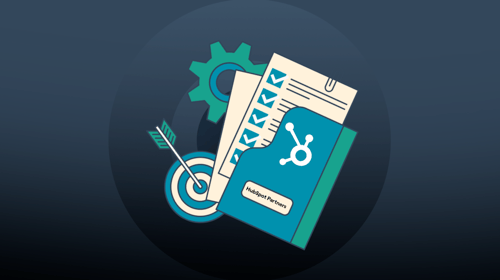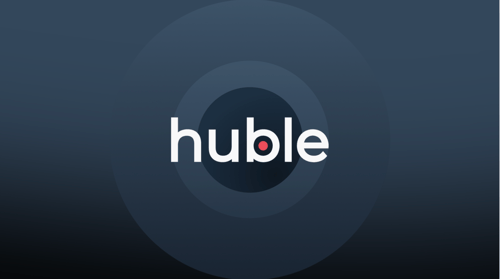In this blog, Matthew Creswick, Global Marketing Director at Huble Digital, explains the business benefits of using lead generation software to not just attract, engage and convert website visitors – but also to manage lead nurturing and scoring.
Marketers and salespeople have a lot to do on a day-to-day basis: content creation, social media management, lead scoring, lead nurturing, deal creation – the list goes on.
As all of these activities are connected – social media amplifies content, content generates leads, lead scoring helps sales teams to identify the best prospects – neglecting any one of them could influence the performance of a campaign.
Even for a large business with a dedicated marketing and sales team, managing all of these activities takes a considerable amount of time and effort… even more so for small and medium-sized enterprises (SMEs).
Subsequently, as teams are pressed for time, the quality of marketing and sales activities and actions starts to decline. New campaigns never get off the ground. Lead generation suffers and business revenue is slowed.
Some parts of the process require human input, of course – particularly the creative aspects. Content creation and social media, for example, can’t be automated but can be streamlined. However, things like lead scoring, list management, deal creation, lead nurturing and more, can all be automated through the use of lead generation software on a website, allowing marketing and sales teams scale and improve their activities.
In this blog, I’ll highlight the business benefits of using lead generation software on your website – and how it can help marketing and sales teams to generate high-quality leads.
So, how can lead generation software helps businesses to generate leads?
It helps to develop a more consistent process
Without website lead generation software, businesses rely on their marketing and sales teams to keep in touch with leads, send those leads valuable content and make sure those leads have everything they need.
So while a personal touch is great – it does not breed consistency. In an ideal world, both marketing and sales teams should be preserved until the point a website visitor has a question that cannot be answered by the knowledge articles on the website or wants to make a purchase.
A consistent process is smooth and seamless. Customers today want as little friction as possible through the purchase decision process and that’s exactly what lead generation software provides. It removes the most complex element – the human on the other end – and allows businesses to use technology to guide customers through the buyer journey, providing them with the information they need, when they need it.
It allows businesses to scale and grow activities
Engagement at scale is typically a challenge most small and medium-sized enterprises (SMEs) have.
Unlike large corporations which have dedicated marketing and sales teams, SMEs usually have a few marketing executives and a single marketing and sales manager. No account manager. No head of marketing. No sales director.
So, the principal issue in this circumstance is that many of the day-to-day activities, - list creation, lead management, workflows, sales actions, deals, landing page creation and so on – fall to the marketing executives, marketing manager and sales executive. As they are busy handling these activities, they have no time for strategy or new business opportunities.
Website lead generation software alleviates this strain by allowing SMEs to automate more time-consuming tasks. While landing pages will still need to be created manually, list creation and management can be done automatically through specific workflow triggers. Marketing to sales actions and deals can also be automated through workflows. These are but a few examples but there are a number of actions that can be done automatically through the use of workflows, allowing SMEs to scale activities and spend more time on value-adding activities such as strategy.
Ensures marketers and salespeople interact with prospects at the right time
One thing that marketers and salespeople alike struggle with is timely interactions with interested parties and leads. After a lead is generated and moved from marketing qualified to sales qualified – marketers think the hard work is done and all that’s left is for sales to close. Wrong.
Even if a lead isn’t sales ready or is going through the process of educating themselves by reading content on your website to reach a point of purchase, keeping in touch on a bi-weekly or monthly basis will help them to remember you. Maybe that lead leaves your website for a while and you get back in touch to share content similar to what they first downloaded. This kind of activity can keep a relationship growing and potentially turn leads who would have otherwise been lost into paying customers.
Of course, workflows can automate much of this process but there’s nothing like a personal email to just show leads you care and are interested in how their search for a solution is progressing.
Sophisticated website lead generation software will allow teams to set up lead revisit notifications and reminders to “check in” on a specified basis.
It improves contact segmentation, management and nurturing
Lead generation software can streamline the segmentation, management and subsequent nurturing of leads generated. Instead of having to manually interact with individual leads (which isn’t feasible for any business generating leads on a regular basis) the process can be automated through sophisticated workflows.
For example, businesses could use lead generation software to set up a workflow to automate the transition of leads to specific sales reps depending on where that lead is in the sales cycle.
A new lead – one which has converted from a website visitor to a lead – would be entered into a workflow and sent content similar to that they originally downloaded prior to becoming a lead. Content will be sent via email and every time the lead opens the email and downloads the piece of content in question, they will be scored and moved further into the sales cycle.
Once the lead has accumulated enough points – either by completing the workflow or taking an action on the website that indicates “sales readiness” (such as downloading a pricing document or booking a consultation – they will then be moved onto the next stage in the sales cycle.
For example, HubSpot's lifecycle stages allow businesses to segment their contact database based on how qualified leads are.
Using website lead generation software, businesses can easily segment leads (i.e. those who require more nurturing from those who are competitors or ready to purchase), manage leads and nurture them to a point of purchase.
Lead generation software is designed specifically to do one thing: help grow your business. It achieves this through the automation of traditionally manual processes, allowing marketing and sales teams to focus on other activities.
In today’s world it’s entirely impractical for businesses to have teams involved directly in lead generation and management. Instead, they should be focusing on what gets people onto the website in the first place – search engine optimisation (SEO), content, social media and other elements in the attract phase of the process. Once potential leads are on the website, it falls to the website lead generation software to do its bit!
When utilised correctly, the HubSpot Growth-Driven platform would significantly increase your leads - to learn more about HubSpot Website Design, see a lot more information here. If you want to find out more on how you can generate leads via your website, download our free eBook below!










-3.png?width=500&height=320&name=Matt%20-%20imagery%20bank%20(8)-3.png)

